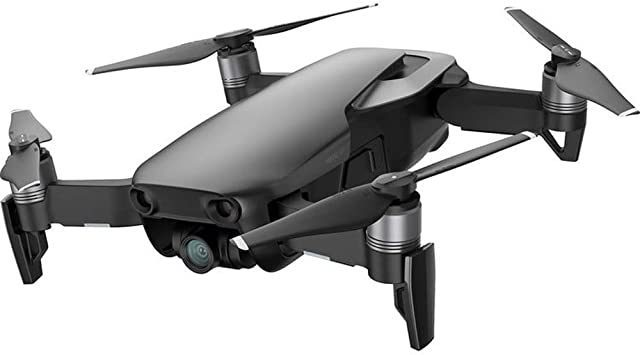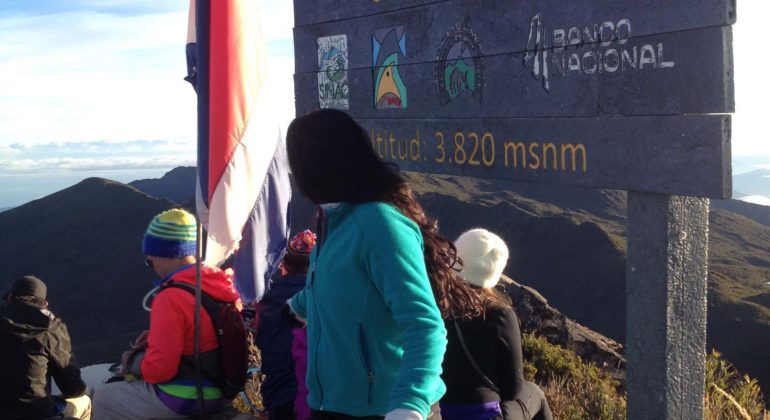
Why should you avoid wearing cotton clothing on Cerro Chirripó?
Why not wear cotton clothing on Cerro Chirripó and other Mountains? If you’re planning a hike on Cerro Chirripó, choosing the right clothing is essential. Although many people think cotton is a good option, the reality is that it can be dangerous during the hike. In this blog, we will explore why you should avoid wearing cotton clothing on Cerro Chirripó and other mountains, and what alternatives are the most recommended. The Lack of Breathability in Cotton One important factor to consider is that cotton is not a breathable material. This means it doesn’t effectively wick away sweat. By absorbing moisture and retaining it, cotton takes a long time to dry, which can cause discomfort during the hike. Additionally, if temperatures suddenly drop, as often happens when ascending the mountain or reaching Base Crestones, wet clothing can quickly cool the body and increase the risk of hypothermia. For this reason, it is crucial to opt for clothing made from technical materials like polyester, nylon, or merino wool. Advantages of Technical Materials for Hiking Technical fabrics offer multiple benefits: Breathability: They efficiently wick away moisture, keeping you dry and comfortable. Quick Drying: Ideal for changing mountain conditions. Extra Protection: Many garments provide wind and UV protection. Durability: Resistant to abrasion, perfect for demanding trails. Moreover, it is recommended to use the layering system to maximize comfort and protection: Base Layer: A polyester or merino wool shirt to wick away sweat. Mid Layer: A fleece or technical sweater to retain heat. Outer Layer: A waterproof or windproof jacket to protect from wind and rain. The Importance of UV Protection Due to Cerro Chirripó’s altitude, sun exposure is much more intense. Cotton clothing does not offer adequate protection against UV rays, leaving the skin vulnerable to sunburns. In contrast, many polyester or technical hiking garments are designed with built-in UV protection, helping to protect your skin during the trek. Resistance and Durability Another key factor is the durability of the materials. Cotton clothing is more prone to abrasion and can tear easily. On the other hand, technical fabrics, such as polyester, are designed to withstand the harsh conditions of the mountain, offering greater durability and resistance. In summary, choosing the right clothing is crucial to ensure a safe and comfortable experience when hiking Cerro Chirripó. Cotton clothing is not recommended due to its lack of breathability, moisture retention, low UV protection, and lower resistance. Instead, garments made from polyester, merino wool, or other technical materials are much safer and more functional options. Remember, proper preparation includes selecting the right clothing for your adventure. This way, you can fully enjoy the nature and magic of Chirripó. Lastly, we share a video with more recommendations for hiking Cerro Chirripó, which will undoubtedly be very helpful. We also invite you to visit our blog for more tips and practical advice. What to bring to Cerro Chirripó?
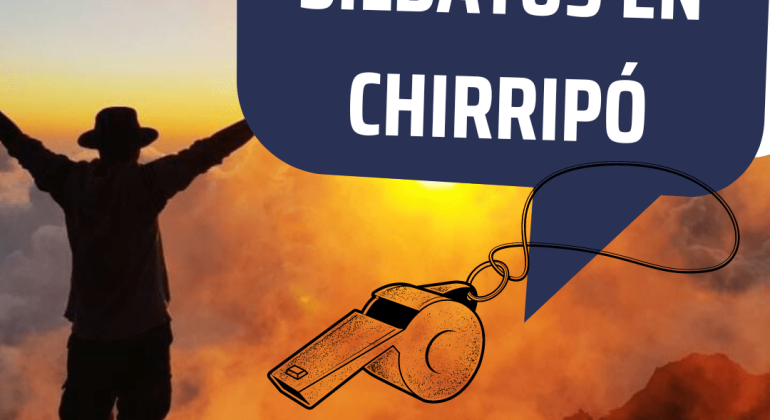
Why you need a whistle for hiking Cerro Chirripó
Why to use whistles in Cerro Chirripó Did you know that the Chirripó National Park recently implemented a new regulation requiring all visitors to carry a whistle during their visit? In this blog, we’ll discuss why using a whistle in Chirripó is essential, explore the different types of whistles available, and provide tips for choosing the right one for your hike Advantages and Disadvantages of using a Whistle in Chirripó First, among the advantages of using a whistle in Chirripó, we can highlight the following: It can help attract the attention of other tourists or park staff in case of an emergency. It can be used to signal your location to other tourists if you get lost. It can be used to alert animals of your presence. It can be used as a communication tool in case the phone does not work. However, there are also some disadvantages to using a whistle on the mountain. Some of these disadvantages include: The sound can be annoying to other hikers in a quiet area. If you’re not used to using it, it can be easy to lose or forget it in case of an emergency. It implies an additional cost for your trip. Types of whistles available On the other hand, it’s important to note that there are several types of whistles that can be used on the mountain or during your hike up to Chirripó. The most common ones include safety whistles, emergency whistles, survival whistles, and high-frequency whistles. Each type has specific characteristics and uses: Safety Whistles: These are the most common and are mainly used to attract attention in emergency situations.Emergency Whistles: Designed to produce a loud and continuous sound, these are ideal for alerting others in case of danger.Survival Whistles: Compact in size, these are practical for signaling if you get lost or need help.High-Frequency Whistles: The most modern type, these emit high-frequency sounds that can be heard over long distances, improving effectiveness during rescues. Each of these whistles can be an essential tool, depending on the needs and circumstances of the hiker. Using a whistle on Chirripó’s trails You may be thinking: “What a hassle, which one should we buy now?” Don’t worry! You can use any type of whistle, as the park doesn’t require a specific one for entry. The only thing they ask is that you carry a whistle with you during your visit. In addition, many backpacks now include built-in whistles. Just make sure to check their effectiveness, and if they meet your needs, they could be sufficient for your trip. Whistles for safety on Chirripó In conclusion, carrying a whistle during your visit to the mountain is an essential safety measure. It’s important to take precautions to ensure your safety during the adventure. The key is choosing the right whistle for your trip and making sure you know how to use it correctly. Finally, we’ve included a video with more recommendations for hiking Chirripó, which will surely be very helpful. We also invite you to visit our blog for more tips and advice on What to bring to Chirripó. https://www.youtube.com/watch?v=Tf9hgjYx1go
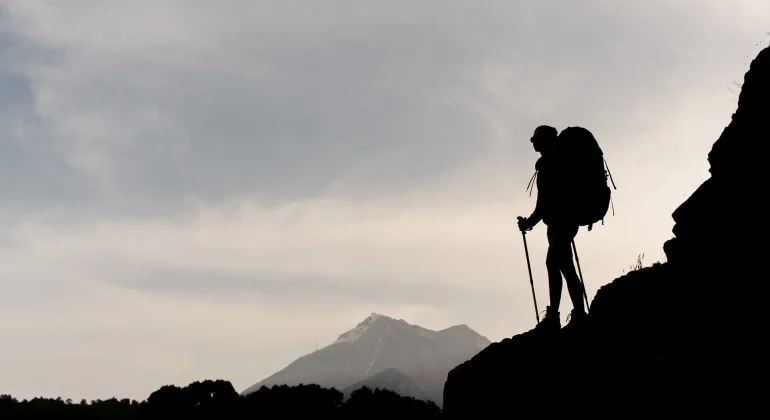
Best Backpacks for Climbing Cerro Chirripó, Costa Rica
Backpacks for Climbing Chirripó Walking is one of the most popular and healthy activities we can do. However, to do it safely and comfortably, it is essential to have the right backpack. Especially if we are thinking about climbing Cerro Chirripó, one of the highest peaks in Costa Rica and one of the most exciting challenges for hiking enthusiasts. Choosing the wrong backpack for climbing Chirripó or long hikes can cause back, shoulder, and neck pain, which can make the hike less enjoyable. The first recommendation we’ll give you when choosing a backpack for long hikes is size. The backpack should be large enough to store all the necessary gear but not so large that it becomes uncomfortable to carry. A 55-60 liter backpack is a good option for multi-day hikes, or if you plan to carry your own gear to Base Crestones Refuge. Otherwise, any regular backpack works, as you can send them with porters and muleteers. On the other hand, a 25-30 liter backpack is sufficient for one-day trips, Chirripó Express, or hiking up to Base Crestones Refuge. Secondly, comfort is another important factor to consider when choosing a backpack. The backpack should have padded straps on the shoulders and waist to distribute the weight evenly. Additionally, the backpack should have a system that allows you to adjust the length of the straps to fit the length of each person’s back. Backpacks for Climbing Chirripó Lastly, organization is also essential when choosing a backpack. The backpack should have multiple compartments and pockets to store small items and keep them organized. This is especially important when climbing Cerro Chirripó, as you need to carry water, extra clothing, snacks, and emergency equipment. Some backpacks even now come with built-in whistles, which are mandatory for use in the park and are very useful in case of an emergency. To conclude, durability is also an important factor to consider when choosing a backpack. The backpack should be water-resistant and durable to withstand prolonged use and tough conditions. Additionally, the backpack should have reinforced seams and high-quality materials to ensure it lasts for years. This will help ensure a safe and comfortable experience so you can enjoy the hike to the fullest, whether at Chirripó or any other peak you climb. Backpack Recommendations for Climbing Chirripó On the other hand, here is a video with more recommendations for climbing Chirripó that will be very helpful. We also invite you to check out our blog on What to Bring to Chirripó?
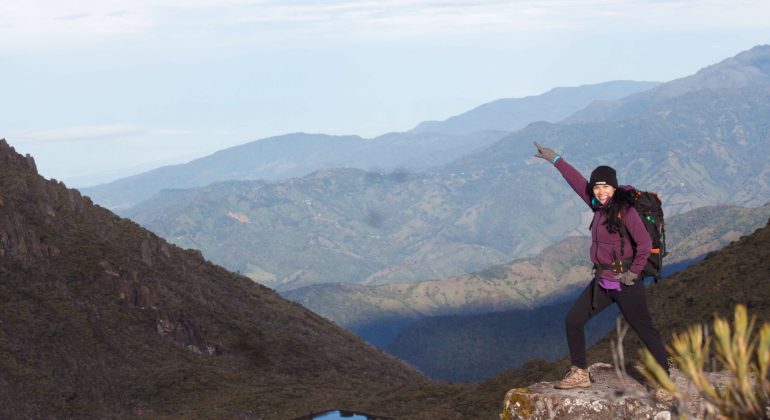
Chirripó National Park regulations
Chirripó National Park Regulations Chirripó National Park (PNCH) has implemented an official public use regulation that includes new rules to preserve this invaluable natural space. Starting on January 15, 2023, these rules aim to ensure a safe and environmentally respectful experience for all visitors. Below, we present the most important aspects of this regulation, including new provisions and key rules. Registration and entry hours First, it is important to mention that the option for tourists to register on the same day of entry to the park has been reactivated, but only at 8:00 a.m. This registration must be done in person and is mandatory. After this time, entry will not be allowed, even if the visitor has a reservation. On the other hand, all those who registered the day before will be able to access the protected area in the early morning hours. Visitors can start their hike from any of the three designated trails from 3:00 a.m. onwards. The descent must begin no later than 12:00 p.m. to ensure the safety of hikers and respect the established schedules. For those who wish to do the Chirripó Express or a one-day tour via the San Gerardo route, entry will be allowed only from 3:00 a.m. at the point known as “El Límite” (located at kilometer 4). It is important to clarify that Chirripó Express is not a tour to see the sunrise at the summit of Cerro Chirripó but an opportunity to explore the various ecosystems along the route. Mandatory requirementsduring the hike Among the new provisions, each visitor must carry a personal whistle throughout the hike, as it is a mandatory requirement. This item can be very useful in emergency situations. Additionally, park rangers have the authority to inspect and, if necessary, confiscate bags, backpacks, sleeping bags, or other personal packages. This is done to prevent the entry or exit of prohibited items, animals, plants, substances, or objects from the protected area. It is important to note that any visitor who disobeys the instructions of park rangers, guides, or volunteers may be sanctioned. This includes immediate expulsion from the protected area without any responsibility from the administration, as well as the possibility of being banned from entering the park for up to one year. Drone use in the park For those wishing to fly a drone in the park, it is mandatory to obtain authorization from the administration. They must also present a copy of the license issued by Civil Aviation. This requirement ensures that drone use does not interfere with wildlife, visitor privacy, or the tranquility of the natural environment. You can read more about this topic on our blog here. Additional rules for a safe visit The entry, transport, or consumption of substances containing alcohol, drugs, or other substances is not allowed. Throwing, burying, or leaving material, waste, or trash within the park boundaries is not allowed. Building rock piles or cairns (apachetas), also known as landmarks, along the trails is not allowed. Placing stickers, images, symbols, or any other type of accessories not authorized by the Administration of the La Amistad Pacific Conservation Area is not allowed. Making bonfires or starting fires is not allowed. Cooking, heating, or processing food with gas stoves or other means, inside or outside the PNCH, is not allowed. Graffiti on any structure is not allowed. Climbing on the rocks known as Crestones is not allowed. The use of horns, speakers, or sound players, both on the trails and at the refuge, is not allowed. Walking outside the established hours, walking on unauthorized trails, and walking off the trail are not allowed. Entering the ASP without completing the required registration with the PNCh administration the day before your entry is not allowed. On the other hand, here is a video with more recommendations for climbing Chirripó that will be very helpful. We also invite you to check out our blog on What to Bring to Chirripó?
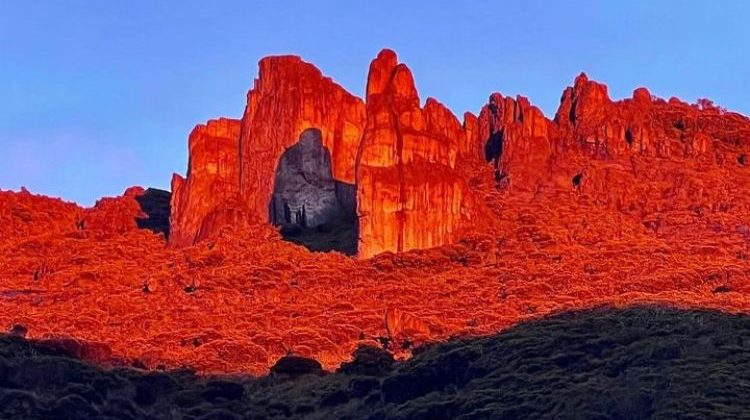
Chirripó National Park weather
Chirripó National Park Weather Want to know more about the weather conditions in Chirripó National Park? Here’s everything you need to plan your adventure! First, it’s important to note that Chirripó’s climate is influenced by both the Caribbean Sea and the Pacific Ocean, causing sudden weather changes. Being prepared is key to making the most of your experience. Would you like to monitor the weather in real time? You can check the National Meteorological Institute’s website, which provides specialized updates on Chirripó’s weather and temperatures. There, you’ll find forecasts on rainfall, temperatures, and wind conditions—essential information for your trip. Additionally, the dry season in Chirripó National Park runs from December to April, with a brief “San Juan summer”in July. The green season lasts from May to November. No matter when you visit, you might be lucky enough to witness breathtaking orange sunsets from Los Crestones, depending on the day’s conditions. Finally, check out our essential tips for hiking Chirripó, including what to pack and how to get to San Gerardo, Herradura, or San Jerónimo. Find us on Instagram at @caminataachirripo and follow us for more updates!
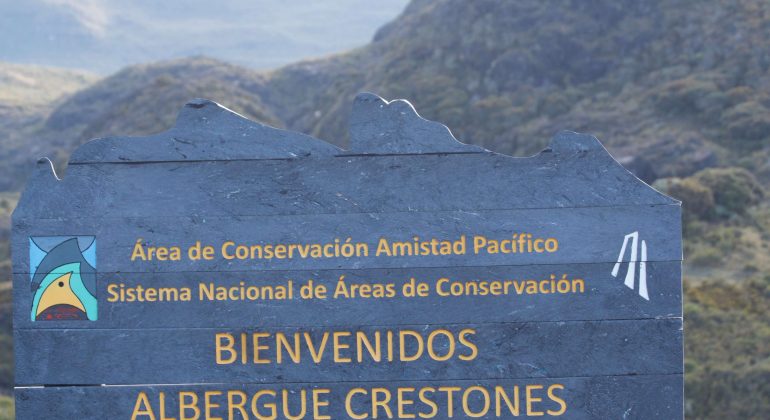
Chirripó Hiking Trails
Chirripó Hiking Trails- the best routes to reach the summit Are you ready to explore the stunning Chirripó hiking trails? Hiking to the summit of Chirripó is a rewarding challenge, and choosing the right trail depends on your preferences and physical abilities. In this guide, we’ll walk you through the best routes for hiking Chirripó, each offering a unique experience. Read on to find out more about the Chirripó hiking routes that you can take to reach the summit. San Gerardo access route: The Traditional Chirripó hiking trail (Medium-High Difficulty) The San Gerardo access route is the most popular of the Chirripó hiking trails. This trail covers approximately 14.5 km to the Crestones Base Refuge and takes about 6 to 8 hours to complete. Along the way, hikers can enjoy beautiful sights like the Llano Bonito Refuge, Monte Sin Fe, and Cuesta de los Arrepentidos. It is also the route used for the Chirripó cross-country race. Availability: Open year-round with a maximum of 44 people per day. Tip: While it’s not mandatory to hire a guide, it’s strongly recommended for a safer and more informative experience. San Jerónimo Access Route: A hidden gem on the Chirripó hiking trails (Medium-High Difficulty) The San Jerónimo access route offers a quieter, less crowded experience, making it perfect for those looking to escape the crowds. This 15 km trail takes about 6 to 8 hours to complete and passes through the Sabana de los Leones, a lesser-known area. Availability: Mondays, Wednesdays, and Fridays, with a limit of 8 people per day. Tip: A certified local guide is required, making the experience even more memorable. Cerro Urán – Herradura access route:The most challenging of the Chirripó hiking trails (High-Extreme Difficulty) The Cerro Urán access route is for experienced hikers seeking the ultimate challenge. This 30 km trail takes you to the Crestones Base Refuge, with an overnight stop at the Paso de los Indios Camp. The next day, hikers continue to the summit. Availability: Tuesdays, Thursdays, and Sundays, with a maximum of 8 people per day. Tip: A certified local guide is required for this demanding route. Practical tips for hiking Chirripó Start times: Routes typically start as early as 3:00 a.m. (except for the Cerro Urán route). Descend no later than 12:00 p.m. for safety. Packing essentials: Be sure to bring proper clothing for changing weather, plenty of water, sunscreen, and a whistle for emergencies. Weather monitoring: The Chirripó National Park weather can change rapidly, so check the forecast before setting out. How to reach Chirripó Want to know how to get to San Gerardo and other access points? Check out our detailed guide or contact us directly through WhatsApp for personalized travel tips. On the other hand, here is a video with more recommendations for climbing Chirripó, which will be very helpful.
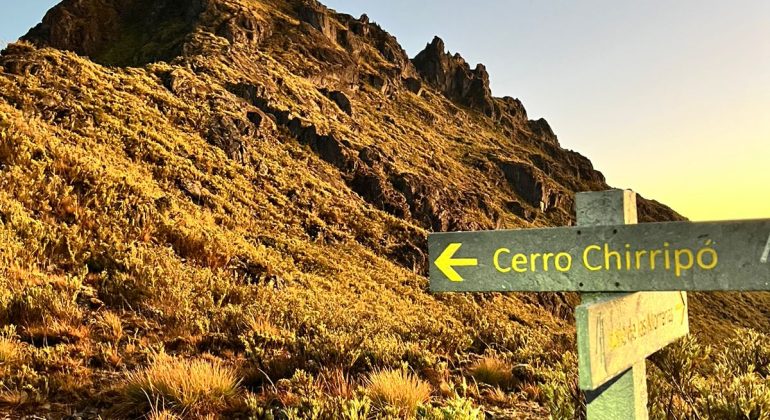
Essential Recommendations for Climbing Chirripó
Essential recommendations for Climbing Chirripó If you’re reading this, you’re probably planning to hike Chirripó or have already secured your reservation. How exciting! Reaching the highest peak in Costa Rica is one of the most rewarding hiking experiences, and it’s truly an adventure of a lifetime. To help you prepare, we’ve created this guide with essential recommendations for climbing Chirripó, covering everything you need to know before, during, and after your journey. Before Climbing Chirripó Preparation is key! Hiking Chirripó requires significant physical effort, so it’s essential to train in advance to fully enjoy the experience. Here are some considerations: Engage in activities that improve endurance and breathing, such as walking, running, cycling, swimming, or gym workouts. The more time you dedicate to training, the more enjoyable your hike will be. Consult your doctor and undergo all the necessary tests. Stay hydrated and eat healthily. Go for walks and practice carrying backpacks with water, a poncho, snacks, and using trekking poles. Look for the right gear and clothing to climb the mountain. Book in advance. Check out our blog on “What to Bring to Chirripó? Arrive early to register; this will allow you to start at dawn. And my favorite phrase is: if you want to achieve it, you can make it possible. During the Hike Once your journey begins, keep these essential recommendations for climbing Chirripó in mind: Eat a light breakfast. Try to stretch for about 5-10 minutes before starting. Start the first kilometers as slowly as possible, allowing your body to adjust to the new temperature and altitude. Find your pace and maintain it consistently. If you take breaks, make sure they are short and no longer than 10 minutes. Don’t let your body cool down. Do not wear heavy clothing, jeans, or materials that are too warm to start the hike. If you’re not used to walking with trekking poles, don’t use them. Check for any friction you feel on your feet, and avoid blisters. Carry a small and practical first aid kit with you. Bring a poncho or rain jacket with you. Arriving at Base Crestones Once you arrive at the lodge, stretch, and help your muscles relax. Take a shower; this may be the most memorable moment of your first day, but without a doubt, the cold water will help relax your muscles. Wear dry and clean clothes; here you will have access to suitcase #1. Enjoy the view and have that long-awaited coffee or hot chocolate. If you go for a walk, always remember to inform someone. Bring your poncho or rain jacket. You can also bring extra batteries to charge your phone and a first aid kit to be prepared in case of an emergency. After the Hike: Descending Chirripó Do stretching exercises. Visit other destinations or other access routes such as Ruta Urán and San Jerónimo. Share your incredible photos with us. Don’t forget to tag us by writing #caminatasalchirripo #yosubialchirripo #puntomasaltodecostarica #tourschirripo. Find us on Instagram as @caminataachirripo and follow us. Leave us a review on Google or TripAdvisor about your experience and when you plan to return. For more details, check out our blog section, where you’ll find essential information such as What Backpack to take to Chirripó?, Best Routes to Hike Chirripó, and Chirripó National Park Weather
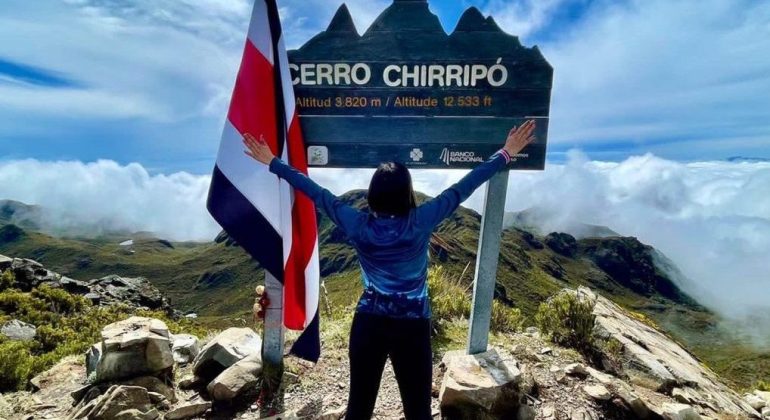
How to get to Chirripó?
Access routes to Chirripó – How to get to Chirripó Before planning your visit to the majestic Cerro Chirripó, ask yourself this important question: Which access route will you take to enter the national park? This is crucial because there are three main routes, each located in a different community. Below, we explain how to reach these picturesque towns. The Traditional Route First, we have the traditional route, one of the most popular among visitors. It starts in San Gerardo de Rivas, a charming mountain village. As you hike, you’ll pass by iconic landmarks like Llano Bonito and the famous Cuesta de los Arrepentidos, known for its steep incline. If you’re looking for the classic Chirripó experience, this is the perfect route. Herradura – Cerro Urán Route Next is the Herradura – Cerro Urán route, which begins in Herradura de Rivas, a neighboring town of San Gerardo. This route is ideal for those looking for a less crowded alternative with breathtaking views along the way. It also connects to Cerro Urán, another must-visit peak in the region. San Jerónimo – Sabana de los Leones Route Lastly, there’s the San Jerónimo – Sabana de los Leones route, which starts in San Jerónimo de San Pedro. This option is perfect for travelers seeking a more intimate and immersive experience in nature. The trail leads to Sabana de los Leones, a peaceful spot to take in the beauty and serenity of the surroundings. How to get to Chirripó from these Communities? Now that you know where each route begins, let’s explore how to get to Chirripó from these locations. How to Get to San Gerardo and Herradura Where is San Jerónimo located? How to Get to San Gerardo and Herradura Driving to Chirripó from San José, Alajuela, or Heredia If you’re traveling by private vehicle, take the Inter-American Highway South (Route 2) until you reach San Isidro del General. From there, follow Route 242 towards Rivas for approximately 8.5 km. At a Y-shaped intersection, turn rightand continue on the road leading to San Gerardo de Rivas, the gateway to Chirripó National Park. Driving from the Pacific Coast For those coming from the Pacific Coast, take the Costanera Sur Highway (Route 34) until you reach the junction with the Dominical–San Isidro de Pérez Zeledón Highway (Route 243). Then, take Route 242, which will lead you directly to San Gerardo de Rivas. Pro Tip: You can use “Caminatas al Chirripó” in Waze or Google Maps for accurate navigation. Estimated travel time: 3-4 hours. Public Transportation to Chirripó If you prefer public transport, you can take a bus to San Isidro del General, with two reliable companies offering service: Musoc – Advantage: Online ticket purchase (avoids long lines, but includes a small fee). Tracopa – Another option with frequent departures. For travelers from Quepos or the Pacific region, take a bus operated by Grupo Blanco, which runs daily at 5:30 a.m., 11:30 a.m., and 3:30 p.m. to San Isidro del General. Once in San Isidro, head to the central market and take the bus marked Canaán–San Gerardo, which will bring you closer to Chirripó National Park. Now that you know how to get to Chirripó, start planning your adventure! Where is San Jerónimo located? Driving to San Jerónimo from San José, Alajuela, or Heredia If you’re traveling by private vehicle, take the Inter-American Highway South (Route 2) until you reach San Isidro del General. After passing through the city, continue driving for approximately 26 km until you reach the intersection with the Unión–Fátima–Zapotal road (Route 333). Stay on this road without turning for about 10 km, and you’ll arrive at San Jerónimo de San Pedro, one of the gateways to Chirripó National Park. ⏳ Estimated travel time: 3-4 hours. Public Transportation to San Jerónimo If you prefer public transport, take a bus to San Isidro del General. Two companies provide service from San José: Musoc 🚌 – Advantage: Online ticket purchase (avoids long lines, though it includes a small fee). Tracopa 🚌 – Another reliable option with frequent departures. Once in San Isidro del General, go to the northeast corner of the Central Market and take the bus marked Zapotal–San Jerónimo. 🕑 Departure times: 11:30 a.m. and 4:00 p.m.🚍 Duration: Approximately 1 hour and 15 minutes💰 Fare: ₡1,850 🚀 Now that you know how to get to Chirripó via San Jerónimo, start planning your adventure! Learn more about the park’s attractions by clicking here. | Visit our frequently asked questions blog by clicking here.
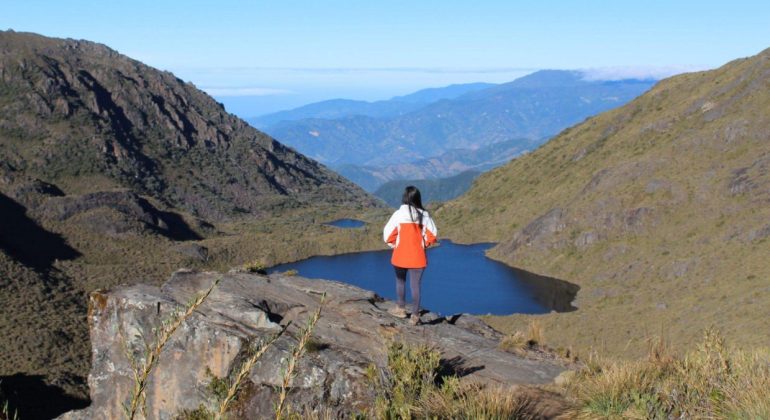
Should you hike Chirripó alone or with a tour?
Deciding how to hike Chirripó When planning to hike Chirripó, Costa Rica’s highest peak, many people start with enthusiasm. However, as the departure date approaches, friends or family often back out. If you find yourself in this situation, you might be wondering: Should you hike Chirripó alone or with a tour? Both options offer unique advantages. While some prefer the freedom of solo hiking, others appreciate the security and convenience of a guided tour. To help you decide, let’s explore the pros and cons of each. Hiking Chirripó with a tour: Why it’s a smart choice Booking a tour with Caminatas al Chirripó, a local company based in San Gerardo de Rivas, offers multiple benefits: ✅ Stress-free planning: A tour agency handles permits, routes, accommodations, and meals, allowing you to focus on the experience.✅ Expert guidance: You’ll hike with specialized staff who enhance your safety and experience.✅ Flexible departures: Unlike fixed group schedules, Caminatas al Chirripó offers personalized reservation options.✅ Peace of mind: No need to worry about logistics or unexpected challenges along the way. Hiking Chirripó alone: more freedom, more responsibility If you choose to hike alone, you gain independence but also take on extra planning. 🔹Complete Control: You choose your own pace, itinerary, and rest stops. 🔹 Self-Sufficiency: From securing permits to carrying your own gear, everything falls on you.🔹 Risk Management: Without a guide, unexpected challenges such as sudden weather changes or navigation errors can be harder to manage🔹 Physical & Mental Challenge: Solo hiking requires strong preparation and resilience, especially for first-time visitors. So, Should you hike Chirripó alone or with a tour? Ultimately, the best option depends on your experience and expectations. If you enjoy handling logistics and seek complete independence, solo hiking may be a great challenge. However, if you prefer a worry-free adventure with expert support, a guided tour with Caminatas al Chirripó will be the ideal choice. On the other hand, here’s a video with more recommendations for hiking Chirripó that will be very helpful. We also invite you to explore our blog section and FAQ page for more useful tips and information.
